27 September 2017
STFC Media contact
Jake Gilmore
Jake.gilmore@stfc.ac.uk
Mobile: 07970 994586
First joint detection of gravitational waves with both the LIGO and Virgo detectors.
British-designed and built technology being used in the hunt for gravitational waves has enabled another scientific first – and is now also helping fix broken bones.
Scientists from 11 UK universities, and 20 other nations, have used a network of three observatories across the United States and Europe to detect the collision of two gigantic black holes, about 1.8 billion light years away. The use of three detectors allowed very precise measurement of the collision, which generated a huge burst of gravitational energy equivalent to about three times the total energy in our Sun. Gravitational waves are ripples in space, and cannot be detected through ordinary telescopes which use electromagnetic radiation such as visible light or gamma rays. Previous gravitational wave detections only used two detectors.
The historic three-detector observation was made mid-morning on 14 August, by both detectors of the Laser Interferometer Gravitational-Wave Observatory (LIGO) in Louisiana and Washington state in the US, and the Virgo detector near Pisa in Italy. The detectors recorded the burst of energy as the two black holes – about 31 and 25 times the size of our Sun – spun together.
Dr John Veitch, research fellow at the University of Glasgow’s School of Physics and Astronomy, co-led a team within the collaboration on working on the data analysis of the signal to determine the origins and properties of the source. He said: “This was a very strong first. The addition to the network of a signal from Virgo provided us with a lot of useful data. Having a third detector means that we can now triangulate the position of the source, and much more accurately determine the exact spot in the cosmos where the signal came from.”
UK Science Minister, Jo Johnson, said “The latest detection of gravitational waves is an excellent example of international collaboration, which was only made possible due to the breakthrough work undertaken by UK scientists and engineers.
“By developing our understanding of the Universe and identifying new fields of scientific research, we are continuing to build upon our reputation as being a world leader in science and innovation which is at the core of our Industrial Strategy.”
Chief Executive Designate at UK Research and Innovation, Sir Mark Walport said: “Research and innovation are global endeavours. Breakthroughs in science involving many partners, such as this one, reinforce the importance the UK places on continuing to be a leading partner in the global scientific landscape.”
Professor Brian Bowsher, Chief Executive of the UK’s Science and Technology Facilities Council said: “Today’s announcement helps us delve deeper into understanding how the Universe works. I am particularly pleased that the UK-built technology at the heart of this discovery is also now being used to improve medical treatments.”
The LIGO detectors rely on British-designed technology to remove vibrations caused by natural and human activity, so that the incredibly tiny distortions caused by the gravitational waves can be accurately detected. That technology is being used in reverse to test a process to grow human bone in a laboratory. The new technique – known as “nanokicking” – vibrates stem cells thousands of times a second, to stimulate the production of bone cells. The new ‘bone putty’ has the potential to be used to heal bone fractures and fill bone where there is a gap.
Professor Sheila Rowan, director of the Institute for Gravitational Research, said: “We’re proud to have played a role in this first new joint detection alongside our partners in the US and in Europe, which is an important advance for the field of gravitational wave astronomy.”


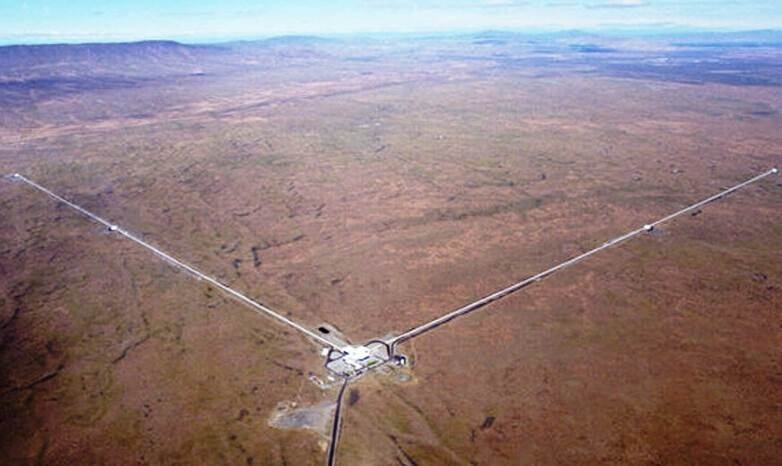
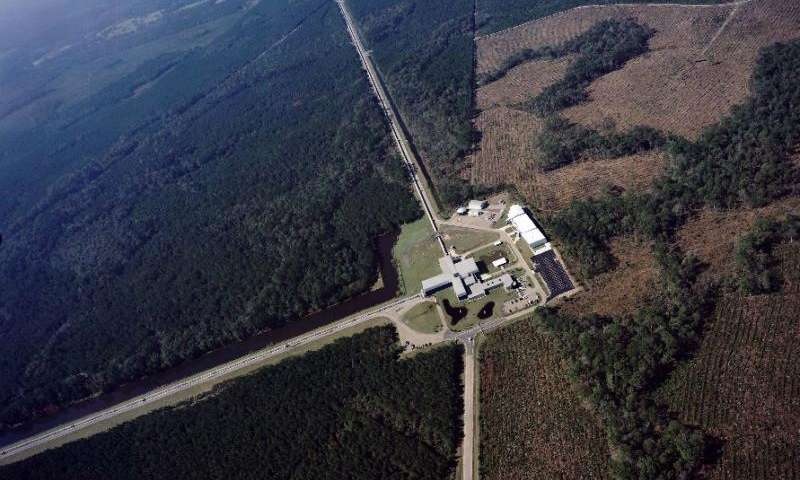


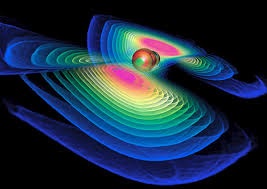
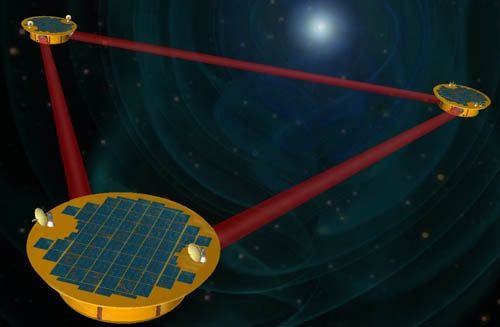

Skymap showing how adding Virgo to LIGO helps in reducing the size of the source-likely region in the sky. (Credit: Giuseppe Greco (Virgo Urbino group)
Professor Mark Hannam, from Cardiff University’s School of Physics and Astronomy, said: “Adding Virgo to the network has allowed us to pinpoint where the signal came from ten times better than before. This is an amazing improvement in the precision of gravitational-wave astronomy.”
Professor Andreas Freise, from the University of Birmingham’s Institute of Gravitational Wave Astronomy, said: “Once again, we have detected echoes from colliding black holes but this time we can pinpoint the position of the black holes much more accurately thanks to the addition of the Virgo detector to the advanced detector network. Around ten years ago I was in charge of designing the core interferometer of the Advanced Virgo project. To see that instrument become a reality, and now helping to deliver significant results, is really special.”
Professor Alberto Vecchio, also from the University of Birmingham’s Institute of Gravitational Wave Astronomy, added, “We’re really proud of how our team have helped contribute to the success of this international network, from designing the equipment to analysing and interpreting the data. It is a truly exciting time for astronomy and astrophysics as we try to unravel the mysteries of the universe.”
A paper about the event, known as GW170814, has been accepted for publication in the journal Physical Review Letters.
See the full article here .
Please help promote STEM in your local schools.
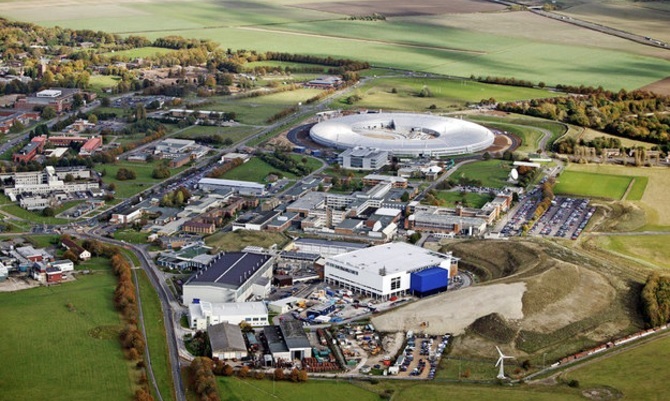
Helping build a globally competitive, knowledge-based UK economy
We are a world-leading multi-disciplinary science organisation, and our goal is to deliver economic, societal, scientific and international benefits to the UK and its people – and more broadly to the world. Our strength comes from our distinct but interrelated functions:
Universities: we support university-based research, innovation and skills development in astronomy, particle physics, nuclear physics, and space science
Scientific Facilities: we provide access to world-leading, large-scale facilities across a range of physical and life sciences, enabling research, innovation and skills training in these areas
National Campuses: we work with partners to build National Science and Innovation Campuses based around our National Laboratories to promote academic and industrial collaboration and translation of our research to market through direct interaction with industry
Inspiring and Involving: we help ensure a future pipeline of skilled and enthusiastic young people by using the excitement of our sciences to encourage wider take-up of STEM subjects in school and future life (science, technology, engineering and mathematics)
We support an academic community of around 1,700 in particle physics, nuclear physics, and astronomy including space science, who work at more than 50 universities and research institutes in the UK, Europe, Japan and the United States, including a rolling cohort of more than 900 PhD students.
STFC-funded universities produce physics postgraduates with outstanding high-end scientific, analytic and technical skills who on graduation enjoy almost full employment. Roughly half of our PhD students continue in research, sustaining national capability and creating the bedrock of the UK’s scientific excellence. The remainder – much valued for their numerical, problem solving and project management skills – choose equally important industrial, commercial or government careers.
Our large-scale scientific facilities in the UK and Europe are used by more than 3,500 users each year, carrying out more than 2,000 experiments and generating around 900 publications. The facilities provide a range of research techniques using neutrons, muons, lasers and x-rays, and high performance computing and complex analysis of large data sets.
They are used by scientists across a huge variety of science disciplines ranging from the physical and heritage sciences to medicine, biosciences, the environment, energy, and more. These facilities provide a massive productivity boost for UK science, as well as unique capabilities for UK industry.
Our two Campuses are based around our Rutherford Appleton Laboratory at Harwell in Oxfordshire, and our Daresbury Laboratory in Cheshire – each of which offers a different cluster of technological expertise that underpins and ties together diverse research fields.
The combination of access to world-class research facilities and scientists, office and laboratory space, business support, and an environment which encourages innovation has proven a compelling combination, attracting start-ups, SMEs and large blue chips such as IBM and Unilever.
We think our science is awesome – and we know students, teachers and parents think so too. That’s why we run an extensive Public Engagement and science communication programme, ranging from loans to schools of Moon Rocks, funding support for academics to inspire more young people, embedding public engagement in our funded grant programme, and running a series of lectures, travelling exhibitions and visits to our sites across the year.
Ninety per cent of physics undergraduates say that they were attracted to the course by our sciences, and applications for physics courses are up – despite an overall decline in university enrolment.


Within a non-academic point of view, regarding gravitational waves, we should bear in mind there are various meanings of the expression gravitational waves, and those detected by LIGO experiment are not the cause of gravity force. From another perspective, they are not produced by accelerating mass but by violent merging bodies. Finally, because of the drag effect they produce, they are most probably related to the so-called expansion of the Universe and dark energy. https://molwick.com/en/gravitation/072-gravitational-waves.html
LikeLike